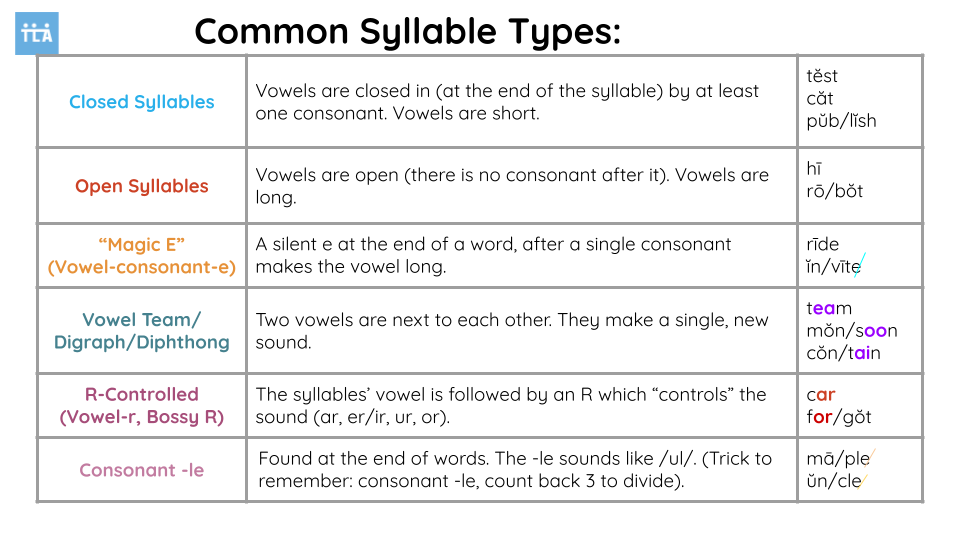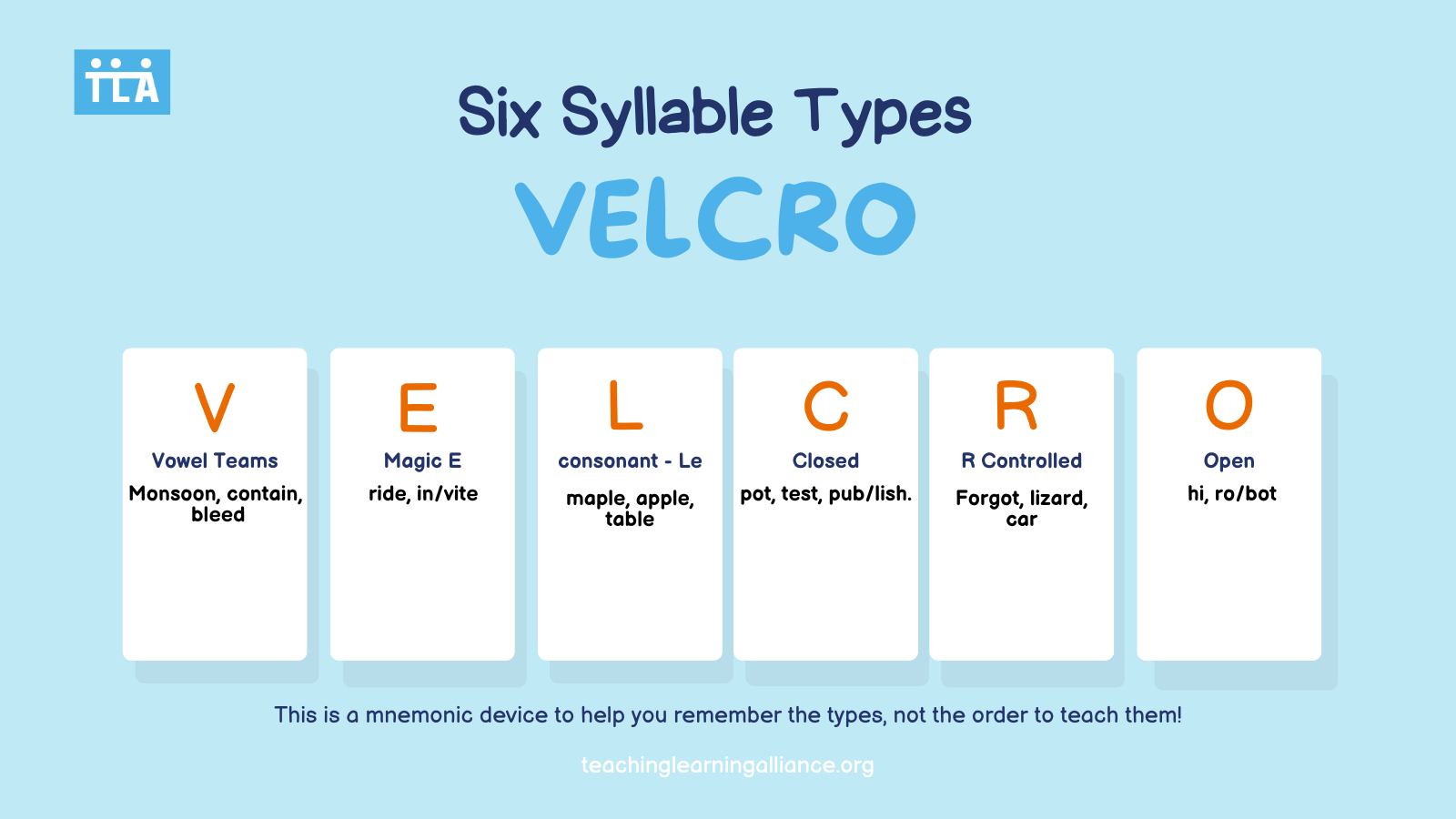Syllabication Strategies, part 1
Do you watch your students read quickly and easily through short, 1 syllable words, only to mumble and bumble when longer words appear in their stories? They know their consonants and vowels, so what’s the problem?
The problem is they aren’t sure how to tackle longer, multisyllabic words with confidence. Providing them with some concrete strategies to find and decode those longer words will help make them savvy syllabication sleuths.
What are those strategies?
There are 3 important strategies we’ll cover in our Savvy Syllabication Sleuth Series, over the next few blog posts:
- Knowing syllable types
- Learning clever rhymes & mnemonics that will help students become faster and more automatic about dividing words
- Understanding how syllable patterns help divide words
Even understanding syllable types is confusing for kids (and their teachers!) Googling “syllable types” will reveal that there is no consensus on exactly how many types there are! More and more programs are starting with the number 6 as the answer for “How many common syllable types are there?”
Six Common Syllable Types
1. Closed Syllables:
vowels are closed in by at least 1 consonant at the end of the syllable:
pot, test, pub/lish.
Closing them in like that usually makes the vowel say it’s short sound. (“Usually” is the most important word to use when teaching anything relating to phonics to children because most rules have words that break them due to English’s ability to absorb words from so many languages.)
2. Open Syllables:
Open syllables end with a vowel as the last letter. The vowels then usually say their long sound.
hi, ro/bot
3. Magic E (or Silent e) Vowel-consonant-e (VCe) syllables:
In these syllables, the pattern of the last 3 letters of the syllable are a vowel, then a consonant and an e to end it. This is another pattern that makes long vowel sounds. (You can help children remember that vowels actually need help to say their name, or their long sound! They either like to be alone as in an open syllable, or they need a buddy. One of their buddies is e, which jumps over one vowel to help the first vowel say its name).
ride, in/vite
4. Vowel Team/Digraph/Diphthong:
(Another buddy to help vowels sometimes say their long sounds!) This is the most confused syllable type because some programs call the vowel teams or digraphs (the groups of 2 vowels—ee, ai, etc. that say the long sound of one of the vowels) one type of syllable and the diphthongs (groups of 2 or more vowels that make a totally separate sound that is not the sound of either vowel—oo, au, etc.) another type of syllable. More and more, programs, however, are lumping them all together as one type of syllable.
Monsoon, contain, bleed
5. R-controlled or “bossy r” syllables:
This is probably the most consistent type of syllable—when r follows a vowel, it truly is bossy and rarely varies from that r-controlled ar, ir, or, ur sound!
Forgot, lizard, car
6. Consonant-le syllables:
Ok, so by now you are probably giggling at how complex vowels are for children, but this syllable type contains the schwa sound (which interestingly is THE most common vowel sound in English and can be represented by any vowel in any syllable type, just to keep it confusing, but that is for another blog post!) However, this is the EASIEST type of syllable to recognize. When you see a word ending in consonant-le, count back 3 and divide the word to find the syllables:
maple, apple, table
The first syllable follows the usual rules (open, closed, etc.) and the 2nd syllable says the consonant sound + /ul/

How can we help kids remember this?
Our trick for making syllable types easy is to remember to use VELCRO:
V = Vowel team/diphthong syllables
E= Silent-e VCe
L: consonant-le
C: closed
R: r-controlled
O: open
 When something is as sticky as VELCRO, it will be easy to remember—at least until next week when our Savvy Syllabication blog will be about using syllable patterns.
When something is as sticky as VELCRO, it will be easy to remember—at least until next week when our Savvy Syllabication blog will be about using syllable patterns.
Want to learn more ?








